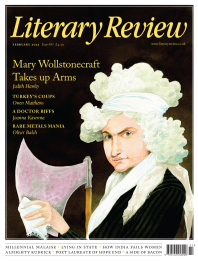Adrian Tinniswood
So Many Little Worlds
London and the 17th Century: The Making of the World’s Greatest City
By Margarette Lincoln
Yale University Press 372pp £25
Margarette Lincoln has chosen her subject well. The 17th century is the most incident-packed period in the history of England, never mind London. Beginning with an attempt to blow up James I and ending with the Glorious Revolution and an aesthetic and scientific renaissance, it saw a series of vicious civil wars, the establishment of a godly republic, the execution of one king and the deposing of another, a plague that killed a fifth of the capital’s population and a fire that destroyed its religious and commercial centre along with most of its housing. It is quite a story.
Lincoln romps through a history of London during this period, taking in everything from coffee-house culture and Catholicism to interior decoration and immigration. She is particularly good on London’s developing cosmopolitanism under the Stuarts. The capital was home to a growing black population, made up largely of seamen and servants.

Sign Up to our newsletter
Receive free articles, highlights from the archive, news, details of prizes, and much more.@Lit_Review
Follow Literary Review on Twitter
Twitter Feed
Few writers have been so eagerly mythologised as Katherine Mansfield. The short, brilliant life, the doomed love affairs, the sickly genius have together blurred the woman behind the work.
Sophie Oliver looks to Mansfield's stories for answers.
Sophie Oliver - Restless Soul
Sophie Oliver: Restless Soul - Katherine Mansfield: A Hidden Life by Gerri Kimber
literaryreview.co.uk
Literary Review is seeking an editorial intern.
Though Jean-Michel Basquiat was a sensation in his lifetime, it was thirty years after his death that one of his pieces fetched a record price of $110.5 million.
Stephen Smith explores the artist's starry afterlife.
Stephen Smith - Paint Fast, Die Young
Stephen Smith: Paint Fast, Die Young - Jean-Michel Basquiat: The Making of an Icon by Doug Woodham
literaryreview.co.uk